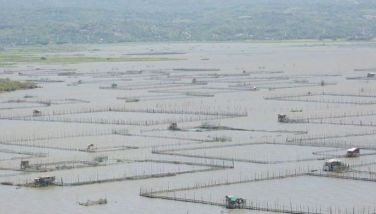Weather forecasts to have color-coded storm surge warnings
MANILA, Philippines - A color-coded storm surge warning will now be part of tropical storm forecasts and bulletins of the Philippine Atmospheric, Geophysical and Astronomical Services Administration (PAGASA), the agency announced yesterday.
The state weather bureau would use the colors green, yellow, orange and red to alert the public of possible storm surges, said Cecilia Monteverde, officer-in-charge of PAGASA’s Hydrometeorology Tropical Meteorology Instrument Research and Development Station.
A green warning means “no alert” and no evacuation is necessary, while a yellow warning means “be alert” and a storm surge is possible.
An orange warning means “alarm,” as a storm surge is possible and evacuation to safer places is encouraged, while a red warning means “take action,” as there is a “big threat to life” and mandatory evacuation is recommended.
Monteverde said the color-coded warning system was developed to help the public better understand the hazards brought about by powerful cyclones such as Super Typhoon Yolanda, which hit the country in November 2013.
She admitted that after the tragedy, the weather agency realized “there was not enough understanding of what would be the impact of the storm surge.”
A storm surge is the abnormal increase of water level along the seashore, caused by strong winds brought by the storm. These winds push seawater, which leads to an abnormal increase in water level heading to the shores.
Yolanda left more than 6,000 people dead and over 1,000 others missing. The typhoon also caused P39.8 billion worth of damage to properties.
“Many of the deaths (from Yolanda) were caused by the storm surge that resulted from strong winds,” Monteverde said during the project launch yesterday, which coincided with the 150th anniversary of PAGASA.
Beginning this year, PAGASA would also officially use the term “super typhoon” to describe a cyclone that registers maximum sustained winds of more than 220 kilometers per hour.
“Using the super typhoon (category) will already imply that this is a powerful cyclone,” said Esperanza Cayanan, officer-in-charge of the PAGASA weather division.
Before the addition of the super typhoon category, PAGASA utilized only three official tropical cyclone categories, namely, tropical depression, tropical storm and typhoon.
While not an official term recognized by PAGASA, the term “super typhoon” has been commonly used by the local media to refer to powerful storms like Yolanda.
The US Joint Typhoon Warning Center officially describes a tropical cyclone with wind speed of at least 130 knots – or around 240 kilometers per hour – as a super typhoon.
- Latest
- Trending



























